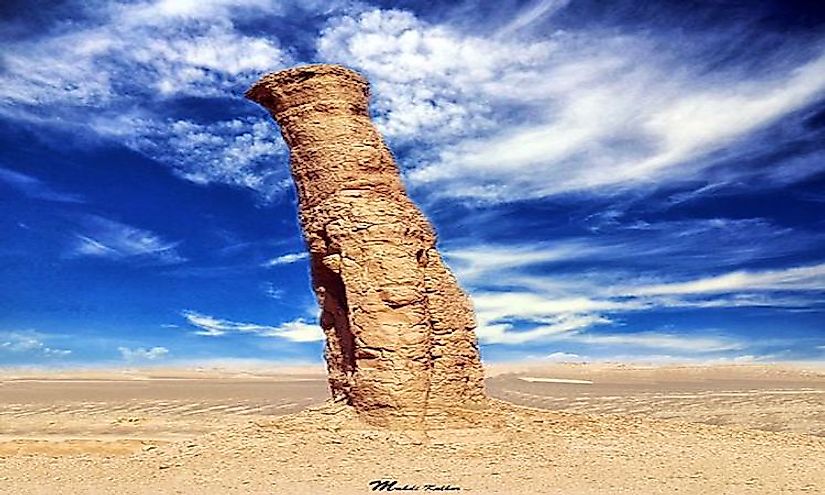Aeolian Landforms: What Is A Yardang?

What Is An Aeolian Landform?
Aeolian landforms are landforms created by the erosive and constructive effect of wind on the Earth’s surface. The landforms are not only limited to the earth but have also been observed on other planets such as Mars where wind action is present. Wind transports and deposits sediments of various sizes in the areas where it is the chief agent of erosion. Such particles include silt, clay, and sand among others. Winds are mostly effective in areas where there is sparse vegetation, little or no soil moisture and unconsolidated elements. Such conditions are widely present in arid environments such as deserts. The Wind erodes the earth surface by both abrasion and deflation. Deflation refers to the removal of the loose particles on the surface of the Earth by the impact of wind. Abrasion is the wearing down of the surface of particles by the grinding action of the materials carried by the wind. The material eroded by winds are transported through saltation, suspension, and skipping on the earth’s surface. The mode of transportation is largely dependent on their sizes and the strength of the wind. The deposition process by wind holds clues as to the past and present directions and intensities of wind. Wind-deposited bodies occur as sand sheets, ripples, and dunes. There are two types of Aeolian landforms: depositional and erosional.
What Is An Yardang?
The term Yardang originate from the Turkic language which means a steep bank, and it was Sven Ander Hedin, a Swedish explorer who introduced it to the English language in 1903. They form in environments where water is very scarce, and the prevailing winds are strong and unidirectional. The abrasive loads carried by the wind carve out elongated ridges that extend out in one direction. Yardangs are typically three times longer than they are wide when viewed from above. They form from generally soft surfaces that get eroded over time. The soft material gets carried away while the hard surface remains behind. They come in diverse shapes depending on the composition of the original material. Some even resemble human beings. They come in various sizes and are categorized as mega-yardangs, meso-yardangs, and micro-yardangs. The mega ones are very extensive covering several kilometers and several meters in height. They are developed in arid areas that experience strong winds. The second category is a few meters high and 10-15 meters wide. They form in semi-consolidated playa sediments. Most yardang fields are in sand-poor areas, but the associated troughs may be invaded by sands.
Where Are Yardangs Found?
Yardangs are found in the deserts, and the largest concentrations of mega-yardangs are found in Sahara desert near the Tibesti Mountains. There are other notable Yardangs in Phoenix Arizona at the Papago Park, which is a rock formation with a hole. There is another Yardang in Arizona near the town of Window Rock. This Yardang is made up of a60 meter sandstone with a large hole in the middle. Geologists have also suggested that the great Sphinx of Egypt was a Yardang. Planet Mars also have large scales of yardangs that extend for several kilometers long and covering as much as I kilometer wide. The Yardangs in the planet are located in the Amazonis area, but some notable ones are found in the equator region. Yardangs in the Mars are relatively young indicating that the eolian erosion is recent.











